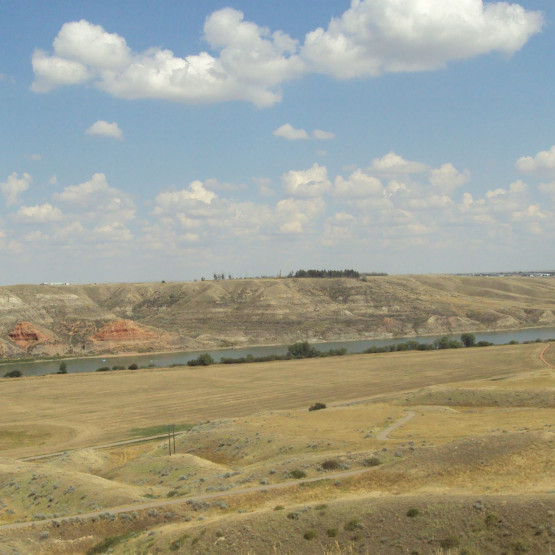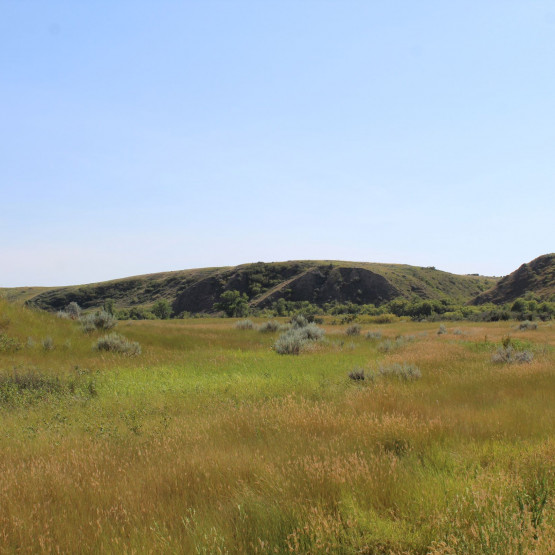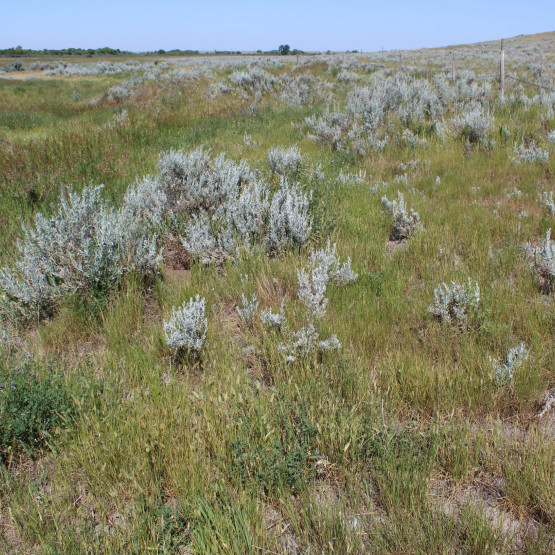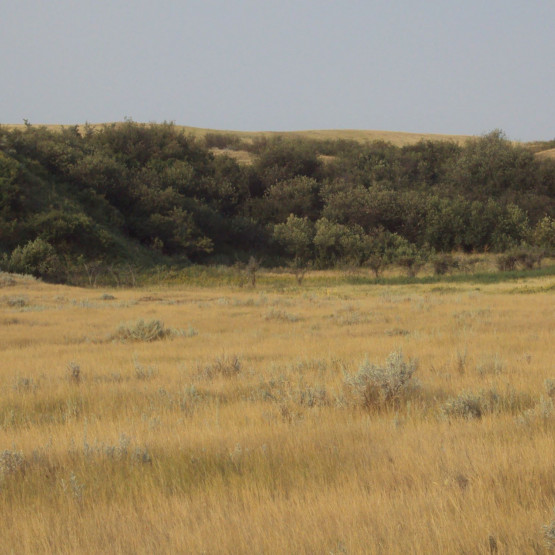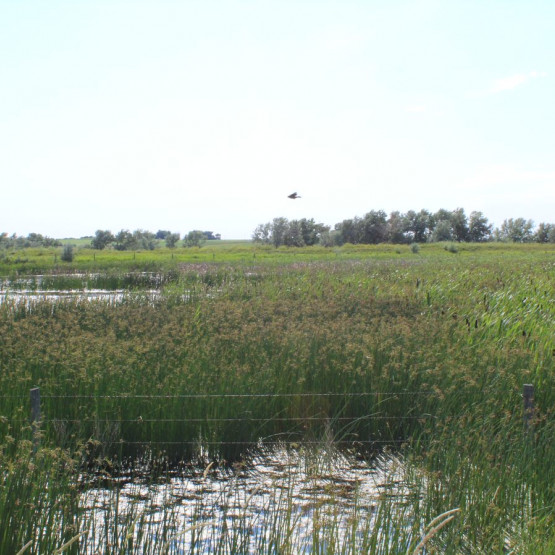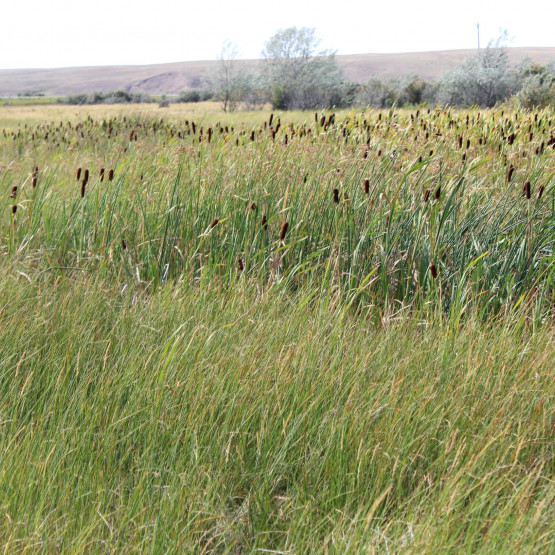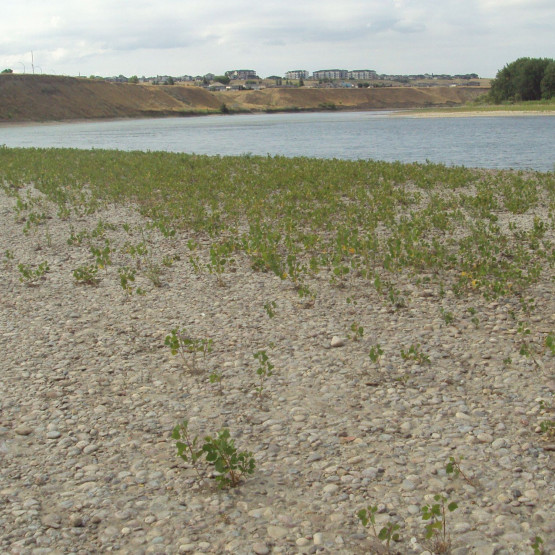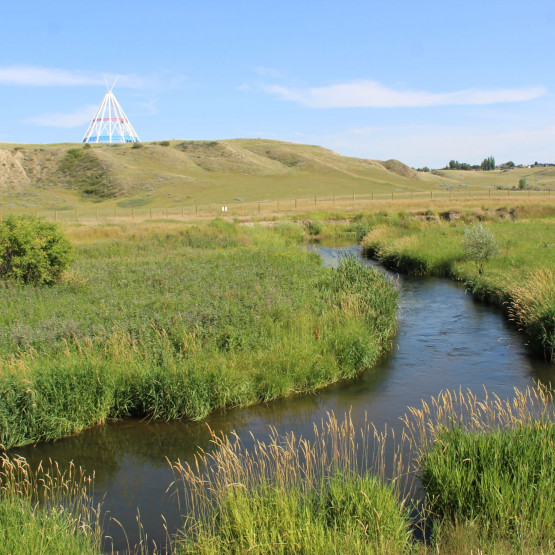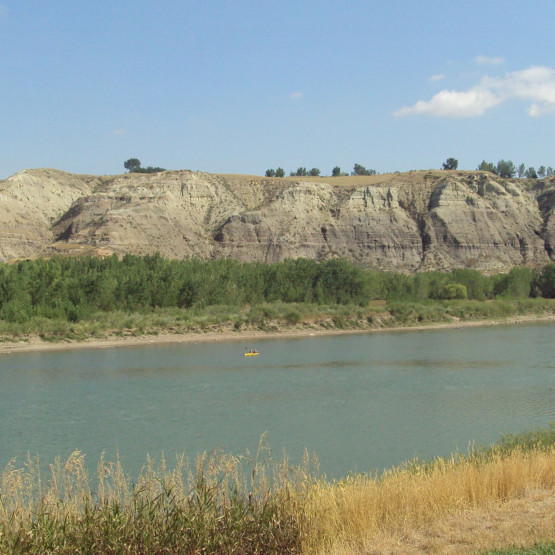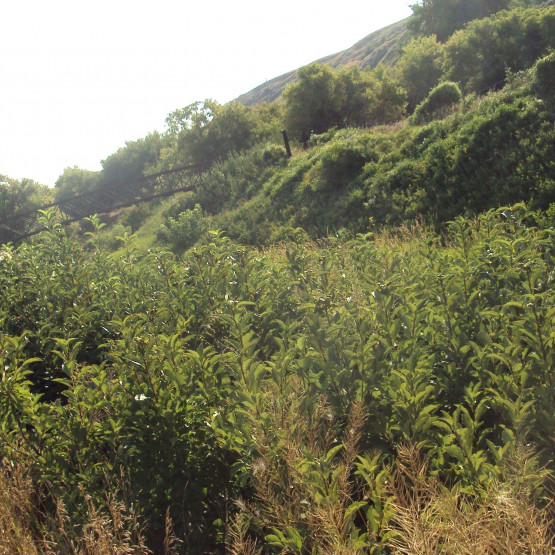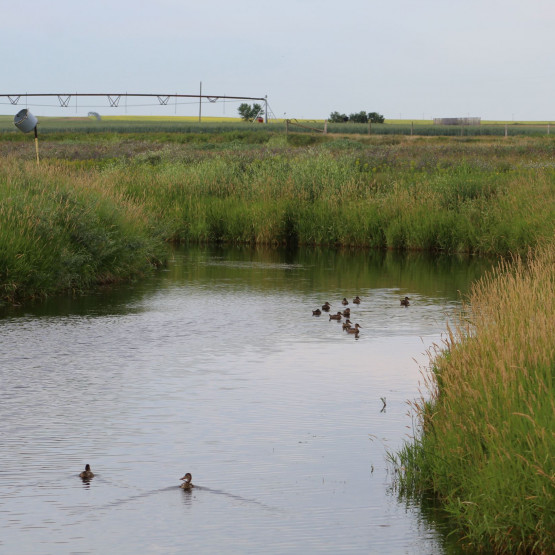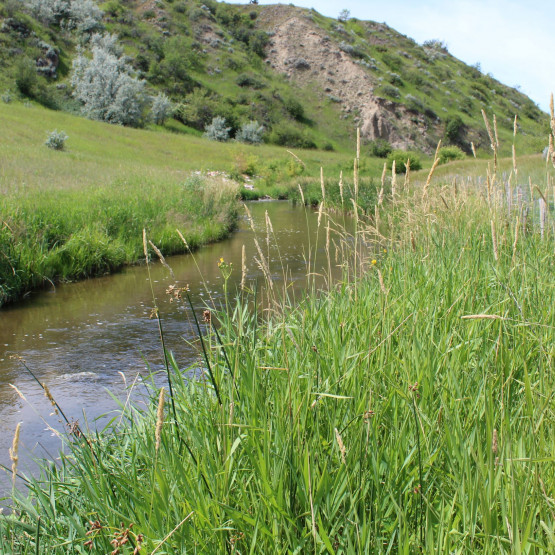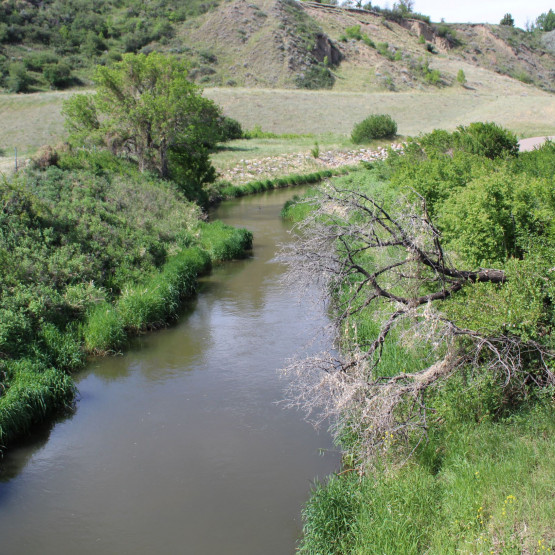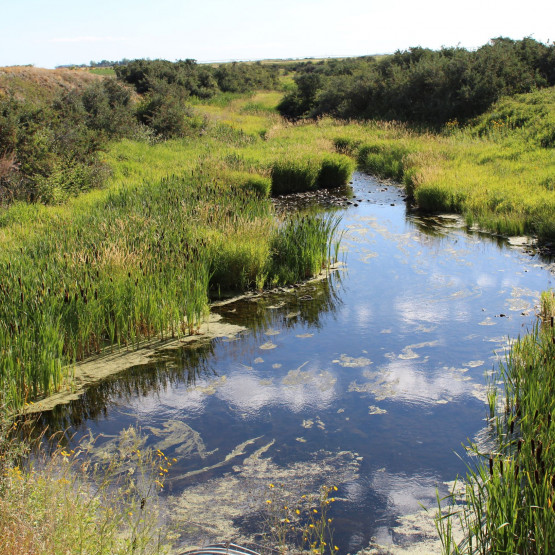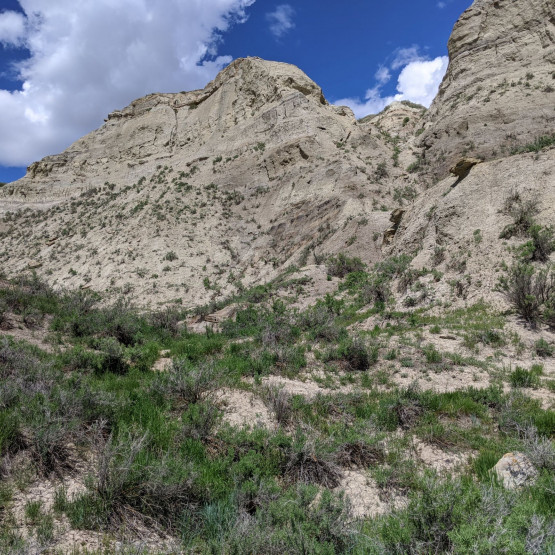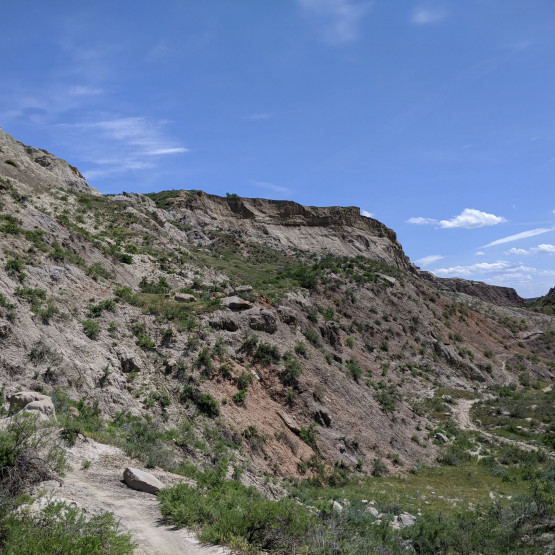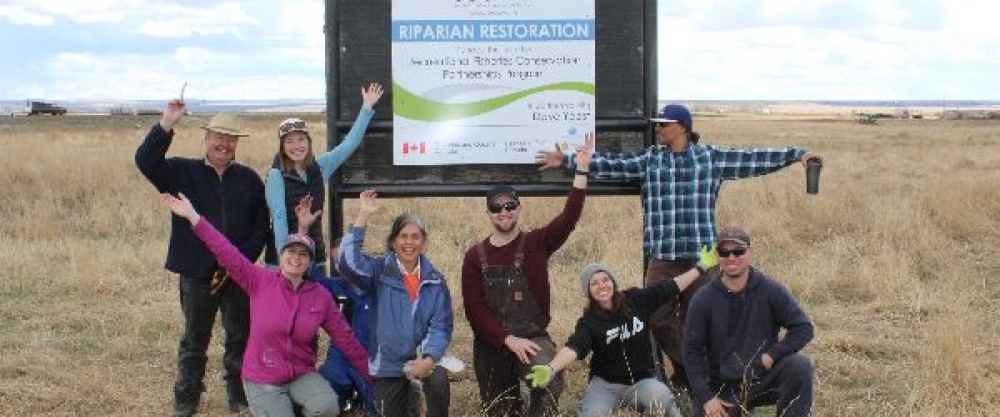An ecosystem is a particular unit area within the natural landscape that consists of a community of living organisms brought together by their inter-relationships with one another within a common physical environment (climate, soil, water, minerals/rocks, and sunlight). Inter-relationships have been established through the food web, habitat network, the cycling of nutrients, and many other natural processes within the community network and within their physical environment. In the SEAWA watershed, prominent natural ecosystems include: the open native prairie grassland, wetlands, riparian areas, badlands, coulees and their associated draws or ravines, streams and lakes, and discharge areas of natural springs. A naturalized ecosystem may include irrigation reservoirs/lakes.
Ecosystems in the SEAWA Watershed
Grasslands
Native grasslands in Alberta are significantly reduced from their historic range, and are home to a number of Alberta's endangered and at risk species. It is important to preserve what still remains.
For some information about protecting native grasslands, see this document produced by Grasslands Naturalists.
A Case for Protecting Native Grasslands - Society of Grasslands Naturalists, 2020 (2.25 MB)Wetlands
Prairie wetlands are particularly sensitive to the influences of agriculture, industrialization, urbanization, and climate change. Here are some links to information about the status of prairie wetlands:
https://www.phjv.ca/wp-content/uploads/2020/11/ECCC_PHJV_HabitatMonitoringReport_LowRes.pdf
https://link.springer.com/article/10.1023/A:1006486607040
Streams, Rivers, and Riparian Areas
These vital waterways bring life that otherwise couldn't exist in the prairies, and provide necessary water supplies to humans and wildlife alike. Most streams in the SEAWA watershed are now controlled via dams and other structures, but their capacity to support diverse life is still there.
